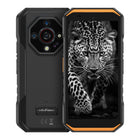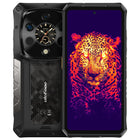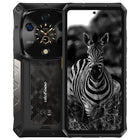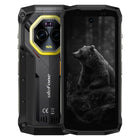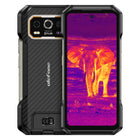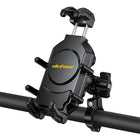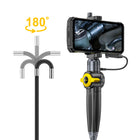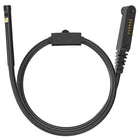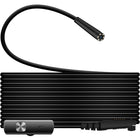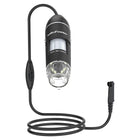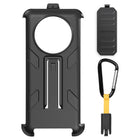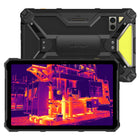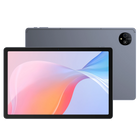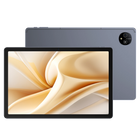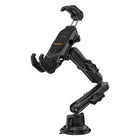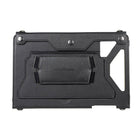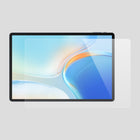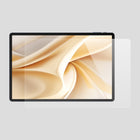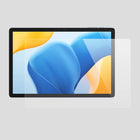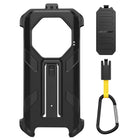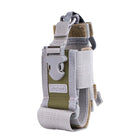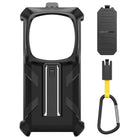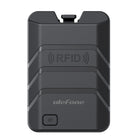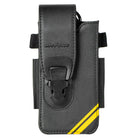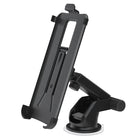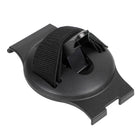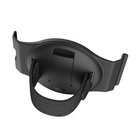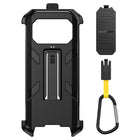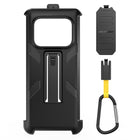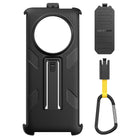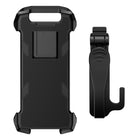Thermal Camera Applications Mechanical
Mechanical Thermal Camera Applications
Thermal cameras are becoming increasingly more common as both handheld and fixed maintenance tools used in mechanical applications. The inner workings of machinery is often vital to its continued, efficient operation and the thermal imaging camera is a great tool for assessing the overall efficiency of mechanical components and ensuring that problems don't arise that could be extremely complex to a business that relies on mechanical operation.
How Thermal Cameras Are Used in Mechanical Evaluation
As machinery operates, it both utilises and generates forms of energy. More often than not the providing energy factor that powers the machinery will be electricity (although other sources of power such as hydro power or solar power can also be used) and this input is what causes the machinery to function and move. As a piece of machinery moves it then in turn produces a different form of energy in the form of heat which can be either extremely hot or almost neglegible depending on the application in question.
This heat output is known as emissivity, and is a form of IR radiation. A thermal imaging camera is able to pick up on this emissivity and uses complex algorithms to detect the heat and convert it into a visible image that shows how heat is distributed.
But what's the point of doing this? Well first of all our eyes are completely useless at detecting IR radiation. Its there all around us on a daily basis but isn't part of the light spectrum that we can actually see, so thermal cameras can see what we can't. In terms of its use in mechanical operations, detecting the heat output of machinery allows a surveyor to check at a glance that the machinery is outputting the correct amount of heat. If extreme temperatures are shown on a thermal image this generally means something is going wrong and excessive amounts of energy are being wasted as heat. It can also be a precursor of machinery breakdowns; thermal cameras allow the user to easily detect problems before they become problematic and steps can be taken to repair damaged components long before they have a chance to break down completely.
Enhance Your Maintenance Program
The thermal imaging camera is an absolutely essential tool for use in maintenance programs.
Performing maintenance can be a long, arduous and extremely complex process. If you're working in larger enviornments where regular maintenance is essential, this may even require the machinery being evaluate to be powered down when maintenance is taking place, leading to decreased profitability due to that machine not being operable.
A thermal camera is capable of solving this problem by allowing the testing of machinery without the need to actually power it down in the first place. Taking thermal images requires absolutely no contact with the area being tested, so it is easily possible to grab a quick thermal shot of machinery in operation and evaluate if any of the machine's components are outputting excessive levels of heat (which usually means there's a problem with the component). Countless companies around the world are now adopting this approach as part of their maintenance procedures and are reaping the benefits because of it.
IR Windows
Infrared (IR) windows are a useful tool for testing inside applications where it isn't easily possible to carry out testing safely usually. The window is installed in the front of an application - e.g. an electrical panel - and is designed to be usable with a thermal imaging camera to allow measurements of the internal components inside the panel to be carried out while the system is still operational.
If you point a thermal camera at conventional glass, you won't be able to see anything outside. You may see your own reflection shown as a thermal image (due to IR light bouncing off the glass pane) but it is generally impossible to see through glass using a thermal camera. IR windows are designed to counteract this effect and allow the user to easily see through glass to test safely inside the application that might otherwise have not been safe.
This way it is easy to scan the internal workings of the system and spot excessive heat being output by components inside the unit. If the unit was powered down and opened up it would be much harder to tell if a component was overheating; it is much easier to test while the system is powered on.
JNARDDC helps Indian aluminum industry save energy and optimize production process with thermal cameras.
‘Thermal imaging cameras are a very welcome technology in the aluminum production industry. In India, the established JNARDDC institute is using thermal imagers to help aluminum production companies across the country save energy and find faults in a very early stage.
Aluminum is the second most abundant metallic element in the earth’s crust after silicon and has been produced in commercial quantities since 1886. It is the world’s second most used metal. Aluminum's many properties and qualities explain the magic surrounding this metal and the reason why its popularity continues to grow among new product designers who are constantly adding to its already wide range of applications.
Monitoring aluminum production
Aluminum production is an energy intensive process and saving energy at each step of the production process is the primary aim of process engineers and designers. Infrared thermography has played an important role in predictive maintenance of these processes in terms of time and money. The predictive maintenance by means of thermal imaging has also helped to perform timely interventions of fault detection and to schedule equipment maintenance.
Monitoring a production process can of course be performed best when processes are running. And it is with this so-called ‘online monitoring’ that thermal imaging can really show its value. Slight temperature variations across a surface will indicate failing components, such as degrading electrical contacts. But thermography can also successfully be used to inspect furnace ducts, bus isolator jumpers, casings, heating chambers or tanks.
Early fault detection
Infrared thermography has proven to be an effective and beneficial tool to the industry, because it allows production managers to schedule their maintenance routines well before anything critical happens. This saves valuable time and significantly reduces the production downtime. Predictive maintenance schedules help the industry to arrange tools and spares for repair in time. Whether it is switch yard joints, current transformers, insulation of turbines, pumps, motors, hot patches in kiln, furnaces etc., all of the them can be surveyed with thermal cameras for early detections of faults.
By means of thermal cameras and other heat measuring devices like heat flux meters, it is also possible to discover scaling, the unwanted deposits in pipelines, storage and processing units. With thermal cameras you can estimate the thickness of scales and take corrective action when needed.
Indian center of excellence
The Indian Jawaharlal Nehru Aluminium Research Development and Design Centre (JNARDDC) has been using thermal imaging cameras for years. The institute is located in Nagpur, India, was set up in 1989 and is fully functional since 1996. JNARDDC is an established center of excellence in the Indian aluminum industry. Next to the conduct of research, the center also offers a variety of R&D, testing and training services to the aluminum industry.
In order to better support its aluminum production customers with high-quality services, JNARDDC decided to purchase FLIR thermal cameras in 2002. The institute was supported by FLIR’s local distributor PCI Limited, situated in Mumbai, who recommended JNARDDC to use the FLIR P660 professional thermal imaging camera for predictive maintenance purposes.
Inspection frequency
In India, aluminum production companies usually carry out thermography inspections only when the need arises. Others will perform inspections on a yearly or half-yearly basis. The advent of thermal imaging in predictive maintenance programs has resulted in willingness to perform these maintenance routines more frequently, because inspection with thermal cameras no longer requires shutting down production.
The FLIR P660 thermal camera is now frequently used by the team of Mr. Anupam Agnihotri, Head and Scientist at JNARDDC, and consisting of Mr S K Thokal (Electrical Engineer) and Mr N Warhadpande (Electronics Engineer).. Although the institute is enthusiastic about the use of FLIR’s technology, customers were a little hesitant at first.
“The operations people were little hesitant at the initial period of inspection, because they conceived infrared to be some kind of X-ray, which would allow them to see inside the equipment,” comments Mr. Agnihotri. “Others thought of infrared as being emitted by the camera and thought that it might harm their equipment.”
Conceptions like these are indicative and typical for the low awareness of thermal imaging technology. Fortunately, it was an easy task for FLIR Systems and its Indian distributor PCI Limited to explain the many benefits and background of thermal imaging. After a short training program, JNARDDC customers were convinced and understood the importance of online condition monitoring with thermal imaging.
“Now operations managers demand to cover the problematic area more frequently than other areas,” comments Mr. Agnihotri. “JNARDDC is now assisting with the design of predictive programs for a breakdown-free plant environment with the help of plant people and their management.”
*Products with Thermal Imaging:
Armor 27T pro,Armor 25T Pro,Armor 25T, Power Armor 18T Ultra, Power Armor 19T, Power Armor 18T, Armor 11T 5G, Armor 9.


